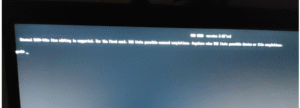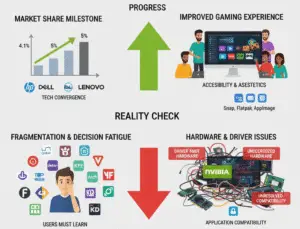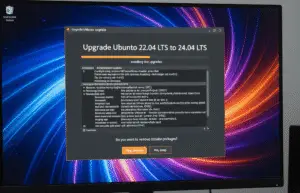
How To Recover Data From a Ransomware Attack in 2025

Ransomware attacks continue to be a major cybersecurity threat, with hackers constantly evolving their tactics. If your data gets encrypted by ransomware, don’t panic—there are ways to recover your files without paying the ransom. In this guide, we’ll explain how ransomware works, steps to recover your data, and best practices to prevent future attacks.
What Is Ransomware? (2025 Guide)
Ransomware is a type of malicious software (malware) that encrypts files on a victim’s device or network, rendering them inaccessible. Attackers then demand a ransom payment—typically in cryptocurrency like Bitcoin or Monero—in exchange for decrypting the files. If the victim refuses to pay, they risk permanent data loss or public exposure of stolen information.
Ransomware attacks have become increasingly sophisticated, targeting businesses, hospitals, government agencies, and individuals. Some variants also employ double extortion, where hackers steal sensitive data before encryption and threaten to leak it unless the ransom is paid.
How Does Ransomware Work?
-
Infection – Ransomware spreads through:
-
Phishing emails with malicious attachments
-
Exploiting software vulnerabilities
-
Fake software updates or pirated downloads
-
Compromised Remote Desktop Protocol (RDP) connections
-
-
Encryption – Once inside a system, the malware encrypts files using strong algorithms, making them unreadable without a decryption key.
-
Ransom Demand – A message appears with payment instructions, often including a deadline. Paying does not guarantee file recovery, and victims may be targeted again.
Top Ransomware Strains in 2025
1. LockBit 4.0
-
Targets: Large enterprises, government agencies
-
Tactics: Encrypts files rapidly and deletes backup copies to prevent recovery
-
Notable Feature: Operates as a Ransomware-as-a-Service (RaaS), allowing affiliates to deploy it
2. BlackCat (ALPHV)
-
Targets: Corporations, healthcare, and critical infrastructure
-
Tactics: Uses advanced encryption and double extortion (steals data before encryption)
-
Notable Feature: Written in Rust, making it harder to detect
3. Cl0p
-
Targets: Businesses using file-transfer software (e.g., MOVEit, Accellion)
-
Tactics: Exploits zero-day vulnerabilities to breach networks
-
Notable Feature: Often leaks stolen data on the dark web if the ransom is unpaid
Steps to Recover Data After a Ransomware Attack
A ransomware attack can cripple businesses and individuals by encrypting critical files and demanding payment for their release. Following a structured recovery plan can help restore data safely and minimize damage. Here are the key steps to recover from a ransomware attack:
1. Isolate Infected Systems
Immediately disconnect the infected device from all networks to prevent the ransomware from spreading.
-
Disconnect from Wi-Fi and Ethernet.
-
Unplug external drives and shared storage devices.
-
Power off affected systems if necessary.
Example:
If an employee’s computer displays a ransom note, shut it down and notify the IT security team to contain the threat.
2. Identify the Ransomware Strain
Different ransomware strains require different recovery approaches. Use these tools to identify the malware:
-
ID Ransomware – Upload a ransom note or encrypted file to detect the ransomware type.
-
No More Ransom – A repository of decryption tools for known ransomware variants.
3. Restore from a Clean Backup
The most reliable recovery method is restoring data from an unaffected backup. Follow the 3-2-1 backup rule:
-
3 copies of your data.
-
2 different storage types (e.g., cloud + external hard drive).
-
1 offline backup (to prevent ransomware encryption).
Example:
A company hit by LockBit ransomware successfully restored its files from an offline backup stored on an encrypted external drive.
4. Use a Decryption Tool (If Available)
Some ransomware strains have free decryption tools. Check:

5. Seek Professional Help
If backups are unavailable and no decryption tool exists, contact cybersecurity experts such as:
-
Kaspersky
-
CrowdStrike
-
Mandiant
6. Report the Attack
Reporting helps authorities track cybercriminals and prevent future attacks. Contact:
How to Protect Against Ransomware





What to Do If Infected?
-
Isolate the infected device to prevent further spread
-
Report the attack to cybersecurity authorities (e.g., CISA, FBI)
-
Avoid paying the ransom – There’s no guarantee files will be restored
-
Consult a cybersecurity expert for possible decryption options
Conclusion
Ransomware remains a critical cyber threat in 2025, with attackers using more aggressive tactics. Prevention through strong cybersecurity practices is the best defense. If attacked, never pay the ransom—instead, rely on backups and professional assistance.
By staying informed and proactive, businesses and individuals can reduce their risk of falling victim to ransomware attacks.




